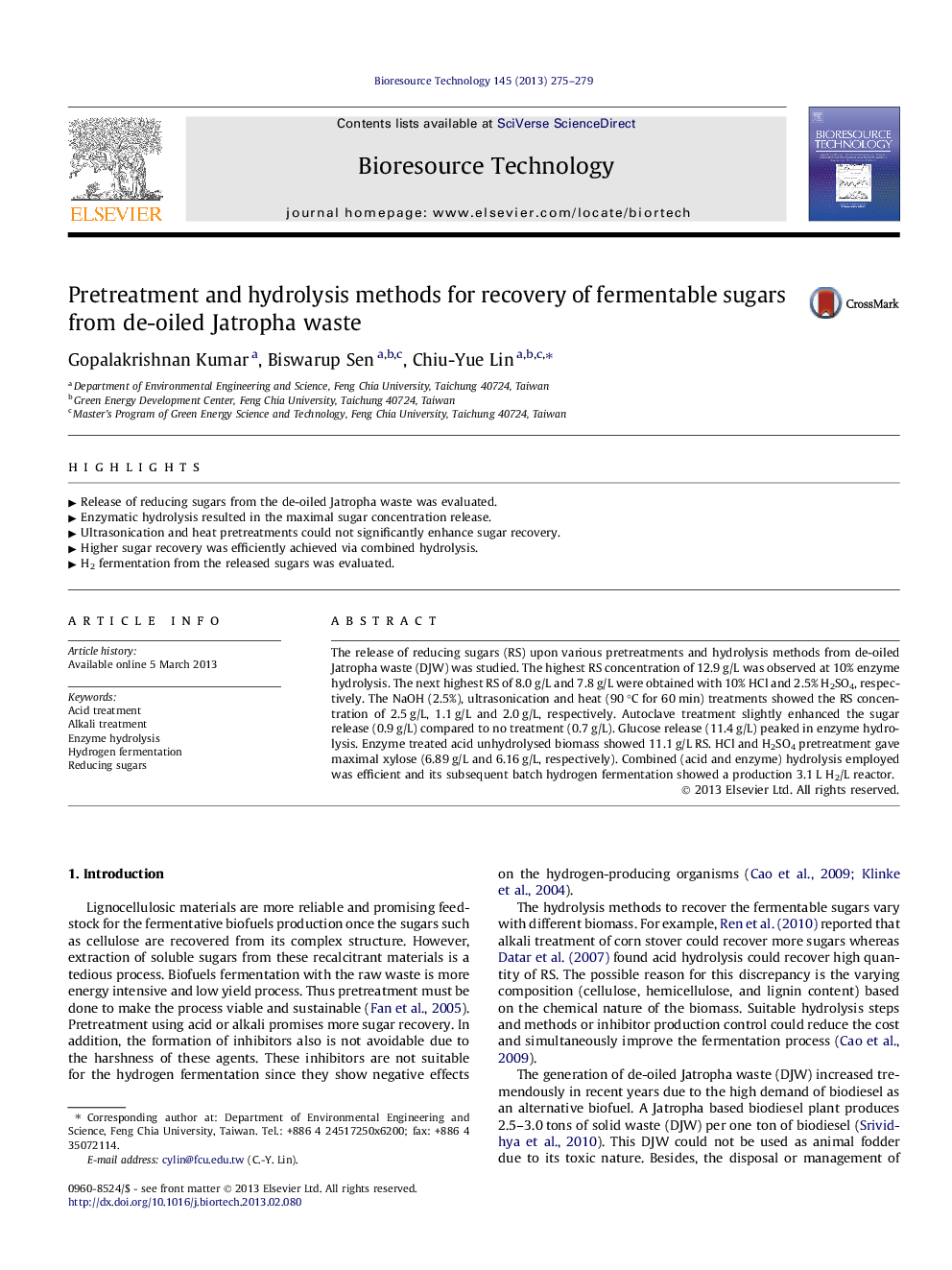| Article ID | Journal | Published Year | Pages | File Type |
|---|---|---|---|---|
| 681060 | Bioresource Technology | 2013 | 5 Pages |
The release of reducing sugars (RS) upon various pretreatments and hydrolysis methods from de-oiled Jatropha waste (DJW) was studied. The highest RS concentration of 12.9 g/L was observed at 10% enzyme hydrolysis. The next highest RS of 8.0 g/L and 7.8 g/L were obtained with 10% HCl and 2.5% H2SO4, respectively. The NaOH (2.5%), ultrasonication and heat (90 °C for 60 min) treatments showed the RS concentration of 2.5 g/L, 1.1 g/L and 2.0 g/L, respectively. Autoclave treatment slightly enhanced the sugar release (0.9 g/L) compared to no treatment (0.7 g/L). Glucose release (11.4 g/L) peaked in enzyme hydrolysis. Enzyme treated acid unhydrolysed biomass showed 11.1 g/L RS. HCl and H2SO4 pretreatment gave maximal xylose (6.89 g/L and 6.16 g/L, respectively). Combined (acid and enzyme) hydrolysis employed was efficient and its subsequent batch hydrogen fermentation showed a production 3.1 L H2/L reactor.
► Release of reducing sugars from the de-oiled Jatropha waste was evaluated. ► Enzymatic hydrolysis resulted in the maximal sugar concentration release. ► Ultrasonication and heat pretreatments could not significantly enhance sugar recovery. ► Higher sugar recovery was efficiently achieved via combined hydrolysis. ► H2 fermentation from the released sugars was evaluated.
